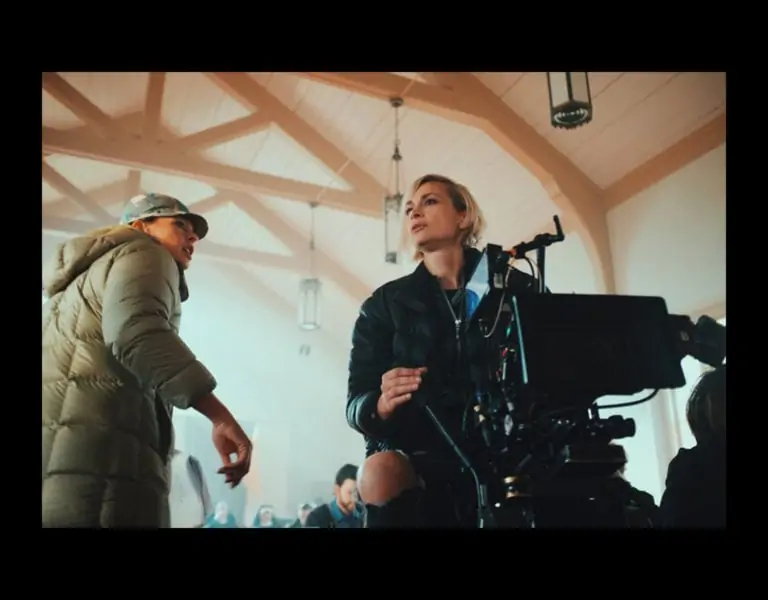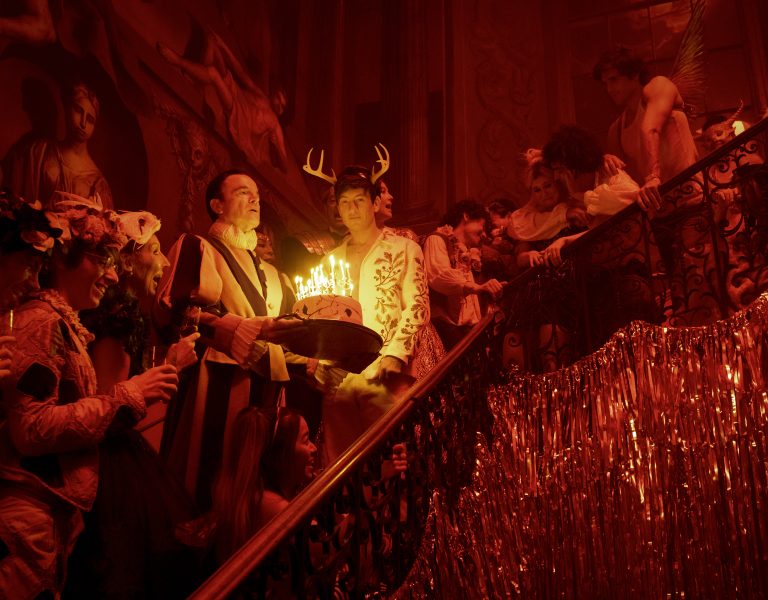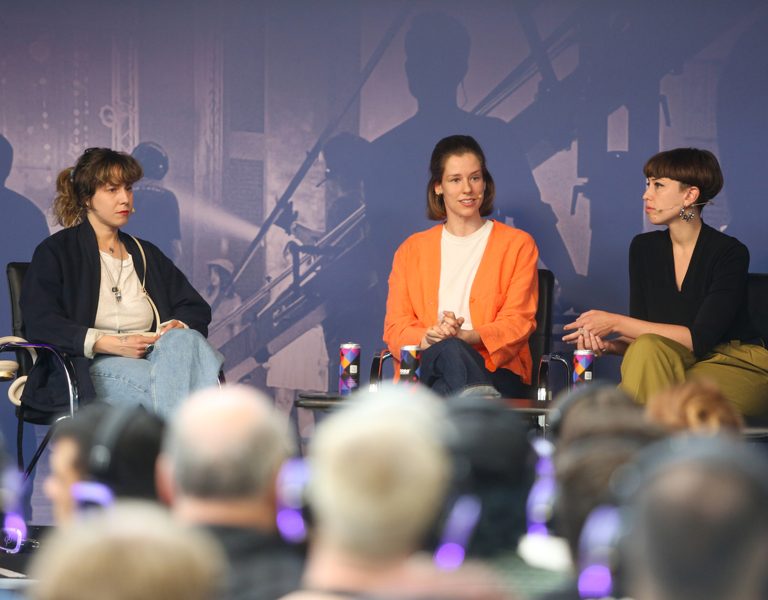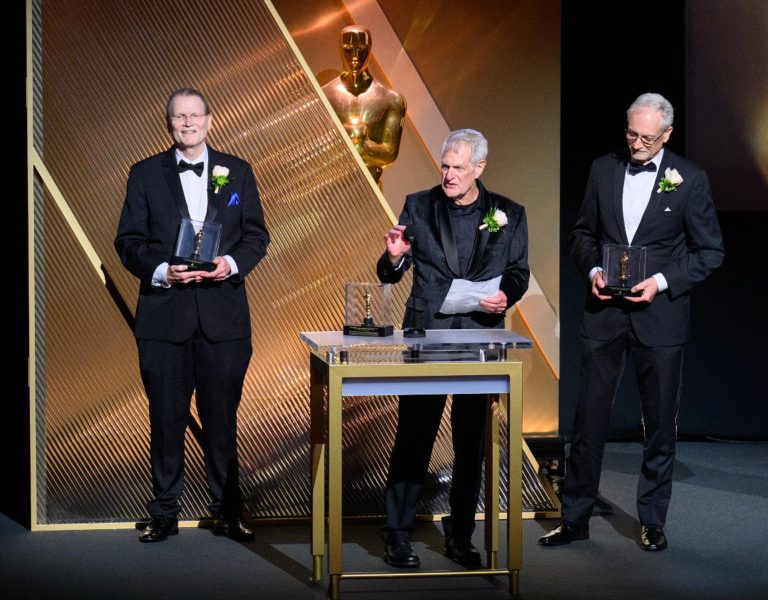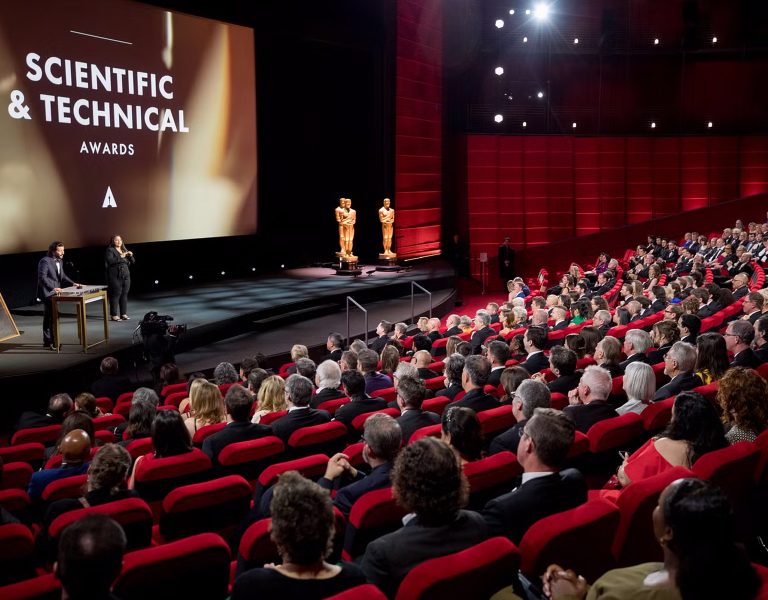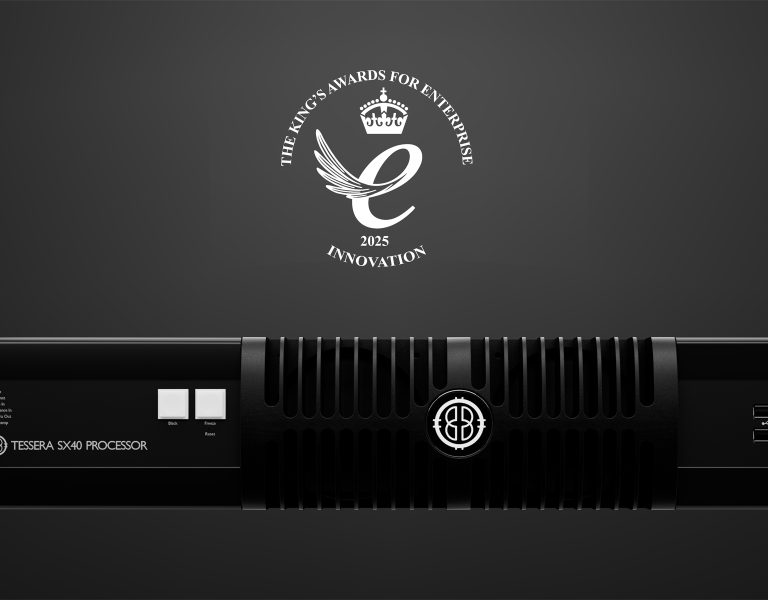
Please share an outline of the production?
The production was pretty quick. We filmed for only two days. And we only had a few pre-production meetings less than a month before filming. But I’ve worked with this team before and it’s always easy to get into a groove with these guys.
Why was it so important to tell this story? How different was the production from
previous projects?
The more projects I do with these guys, the more fun we have on set. I think that’s the best thing about working with friends. The pressure is low, it’s really fun, and we’re all so comfortable with each other that it’s easy to pitch new ideas on the day and trust each other to be creative.
How did the director articulate what they were looking for?
I had a few meetings with the directors Dakota and Harrison to go over their ideas and the vision for the project. They prepared a deck with some reference images but mostly trusted me to come up with my own visual language. Some ideas that we discussed early on were using floaty voyeuristic camera moves, specialty probe shots for the peep hole scenes and the seedy, grungy colour palette.
How did you decide upon the visual language?
A lot of it was discussed ahead of time. But to be honest, we also made a lot of last minute decisions on the day that completely changed the look. The idea to shoot the project in a 4:3 aspect ratio was decided maybe an hour before we started filming the first scene. I pitched the idea, discussed the idea for 15 minutes with the directors and producer and just decided at that moment that it actually fit the project really well.
What creative references inspired you (films, photography, art)?
I take a lot of inspiration from films in the 90s that I grew up watching, stuff like David Fincher’s Se7en, Fight Club and other dark crime thrillers of that era. I also really like the still photography from Gregory Crewdson and I bring a lot of that inspiration into my work.
What do you think is key to making a successful horror film?
I think all successful horror films have a unique tone that gets under your skin and keeps you thinking about the film. And that needs to be achieved by the perfect blend of the context of the story, the pacing, the music, and the cinematography.
How did you go about devising the shot list?
For this project, Harrison and Dakota actually came up with the shot list themselves and then brought it to me and we made adjustments to it all the way up to the actual days of filming.
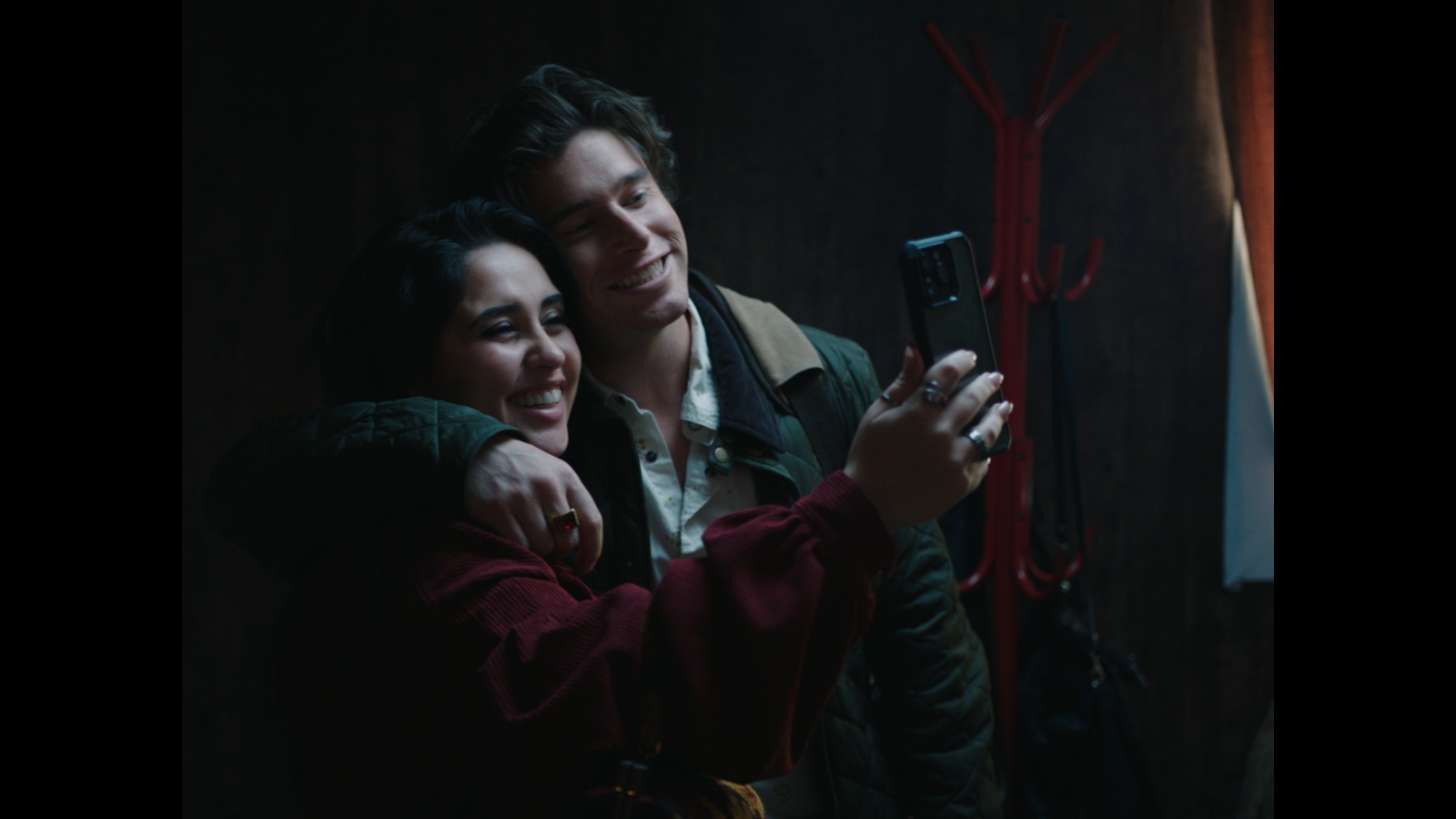
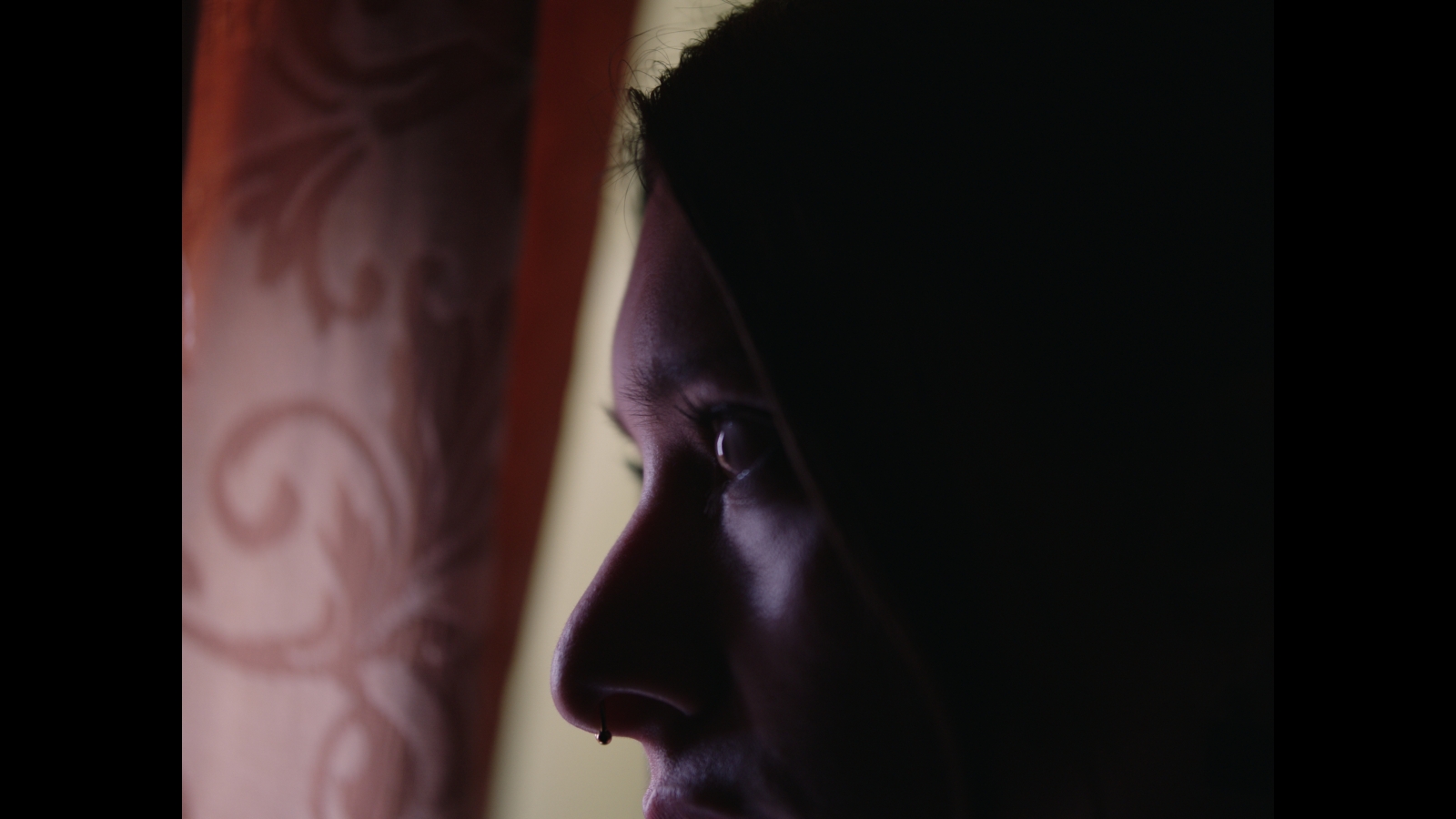
What cameras and lenses did you use and why? Who supplied them?
We shot on Arri Alexa Mini with Sigma Cine Lenses as well as a Laowa Probe lens for the specialty shots. The Laowa was rented from a friend of mine and I own the camera and Sigma lenses. The Sigma Cine lenses are ones that I’ve owned and used for a long time. Mainly because it’s a great, fast, clean look that I can add filtration to and have more control over. Also for lower budget shoots like this, just having my own lenses that I know well goes a long way.
How did you go about devising the lighting schemes and what fixtures did you use and why?
For lighting, we used all Aputure lights and one Amaran F22c light for the key light in majority of the scenes. The benefit of filming 4:3 is that we can make much better use of the small rooms we were filming in and bring in the lights and light modifiers right up to the edge of the frame and it gave us so much control.
Did you have to create any custom camera and lighting rigs?
The only custom “camera rig” was my iPhone 15 pro gaff taped to a laptop. We had to figure out the best way to film the ending webcam scene and I had been testing out filming prores LOG footage out of the Blackmagic app on my iPhone 15 pro. The results have been impressive so I decided to use it for this scene. It worked amazingly and our colourist actually matched it to the Alexa footage really well.
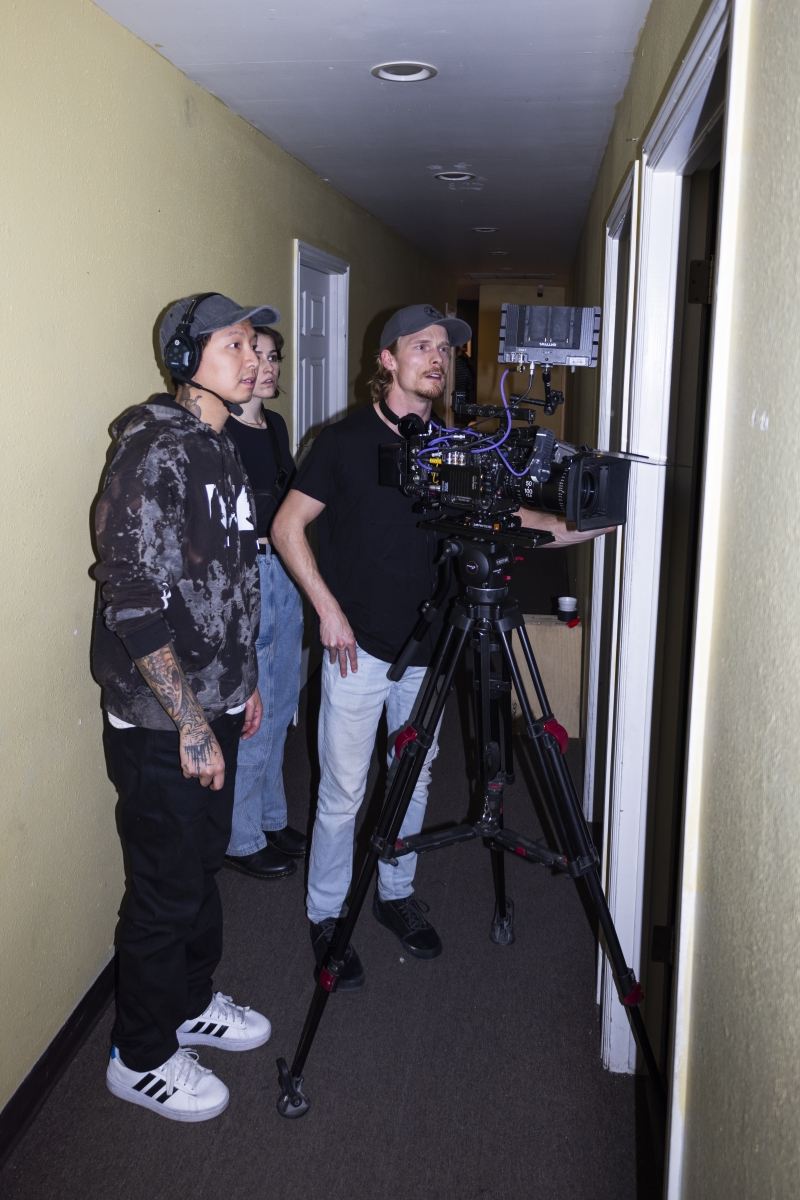
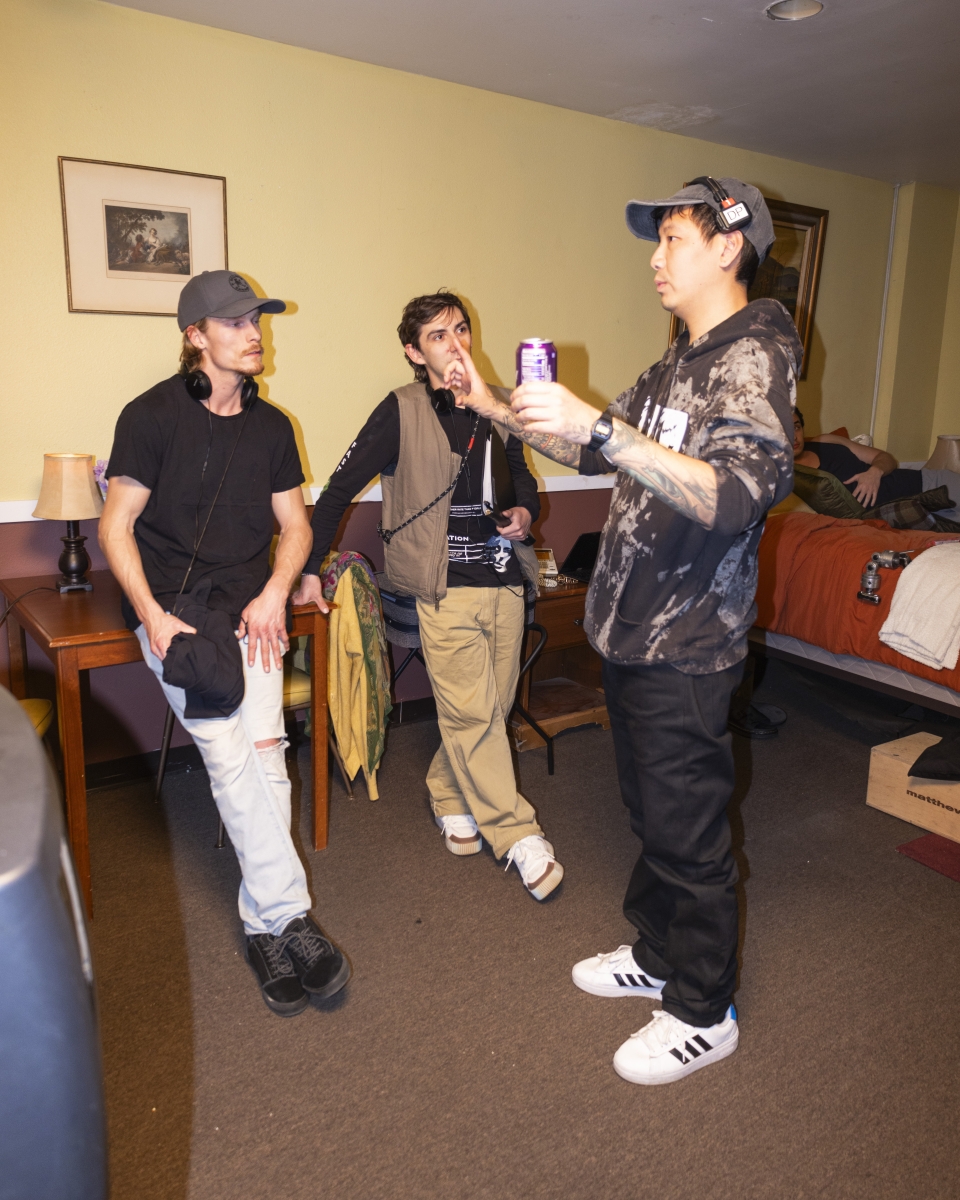
What was your approach to shooting the more gory sequences in the film?
We did a lot of coverage and even added and improvised new shots on the day when we found new creative angles and approaches to the sequence. Once the blood was on, it was too difficult to reset so we just broke the scene up in chunks and shot out each level of blood at a time. It was challenging and messy but really fun.
What challenges did you encounter when shooting the project and how did you
overcome those?
The biggest challenge was a Steadicam shot where we had to move across the entire motel room to establish the two characters, the setting, and then end with the camera entering a peephole hidden in a wall and reveal a macro shot of an eyeball looking from the other side. The main challenge was the fact that we needed a cut point to swap to a probe lens so we could actually fit it into the hole to get the macro eye shot. We tried multiple versions where we used a shoulder as a cut point but eventually we got a version that was smoother and just used a creative transition that our editor pulled off to join the two shots.
How did you decide upon the colour palette and LUTs?
We had some talks with our colourist Gabe before the shoot and he had prepared us a 2383 LUT that we could use on set. Then he worked his magic in post.
Was there much in way of changes in the DI and which colourist were you working with?
Gabe Sanchez was our colourist and I’ve worked with him on a ton of projects now. I usually like to let him do his thing and we have similar sensibilities so usually don’t have much notes.
Is there particular shot or sequence you are most proud of?
The ending scene with the gore is definitely my favourite sequence. Mostly because it was fun to shoot and we got to play around with using iPhone footage. I’m definitely stoked on how well it cut together.
What lessons did this production teach you?
To not be afraid to experiment and to use more iPhones for shoots.
